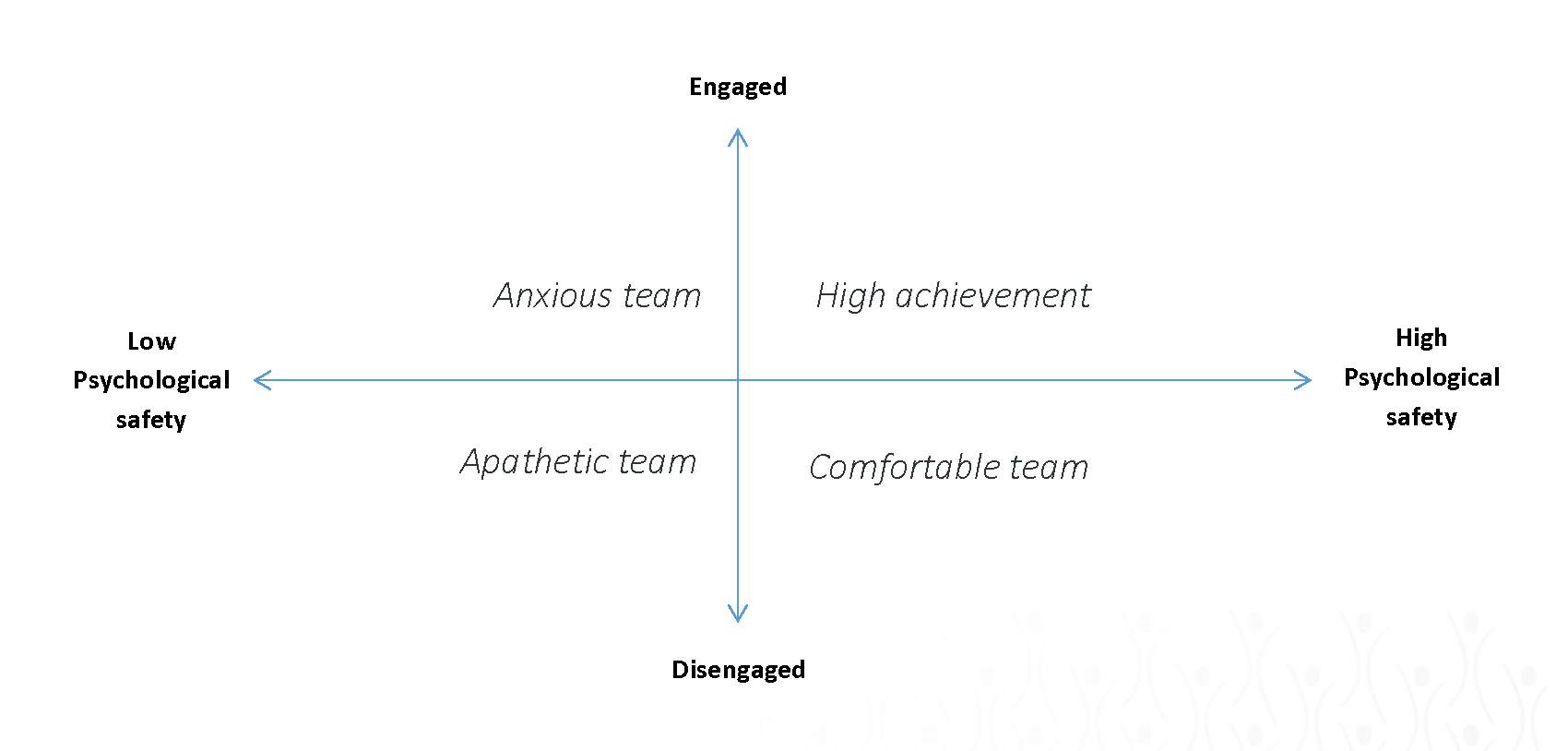How Psychological Safety Drives Productivity and Engagement
“Until you value yourself, you won’t value your time. Until you value your time, you will not do anything with it.”
– M. Scott Peck, Motivational Author
Is productivity a product of high self-esteem or is high self-esteem a product of being productive?
Dr. William Kahn, often called the father of employee engagement- referred to as “personal engagement” is affected by 3 psychological conditions:
- Meaningfulness about our actual job, the role we hold, our professional interactions. And how important they are to see how we see ourselves
- Safety which is concerned with the quality of interpersonal relationships, the nature of group dynamics and the way in which we are led and supported
- Availability and this measures how much physical and emotional energy and confidence we have available to us, how present and available to others we are, and the degree to which the world away from work distracts us, to good or bad effect
Further research has taken place to prove that engagement is more likely to take place in organizations where people are given things in work which they value including autonomy, self-efficacy and a sense of safety.1
An interesting quadrant has been developed to illustrate the relationship between engagement, psychological safety, and the result of the intersection of both factors on team performance.1
We start with the “high achievers”, individuals on this team feel selfless, united and highly committed. The team leader has created a culture where the team feels safe and connected. Success is not a guaranteed outcome however; it is more likely to occur in a high achieving team than others.
In the opposite end comes the “anxious team”. Team members are engaged yet they don’t feel psychologically safe. It is very common to create an anxious team where tasks are communicated and rewarded. However, the atmosphere is too strained as team members don’t feel safe to express their opinions. Moreover, creating interrelationships among members as well as resolving team conflicts may be difficult.
It is also common for teams to feel psychologically safe yet disengaged; this creates a team referred to as a “comfortable club”. This is a team who usually feels disengaged due to inappropriate job demands, a working environment which has become less pleasant, raised targets, reduced resources, or an unhappy merger or acquisition. However, the team leader would have maintained a place of psychological safety. This team will usually not go the extra mile, will be reactive and is generally too comfortable to move.
Finally, the “apathetic team”, unfortunately seen as a sign of failure. Apathetic teams are disengaged and do not feel psychologically safe. Apathetic teams are characterized by lack of interest, internal dissent, backbiting, and office politics designed to undermine at worst. Disagreements are very common among the team and the team will usually do the bare minimum required work.

1https://blog.bonus.ly/how-psychological-safety-drives-productivity-engagement
For more about this topic, download our latest book "Feeling Safe at Work" for FREE:
